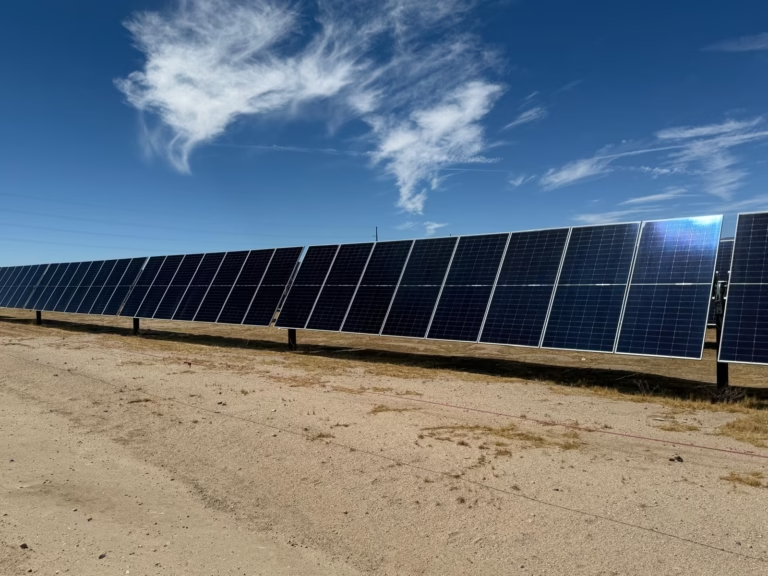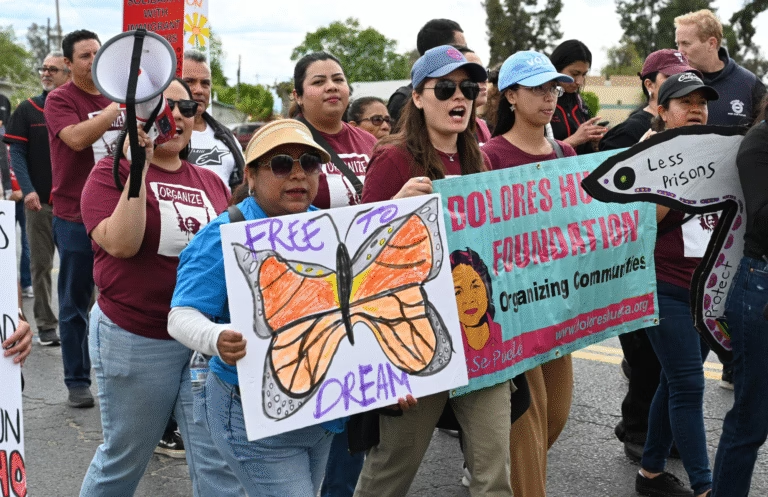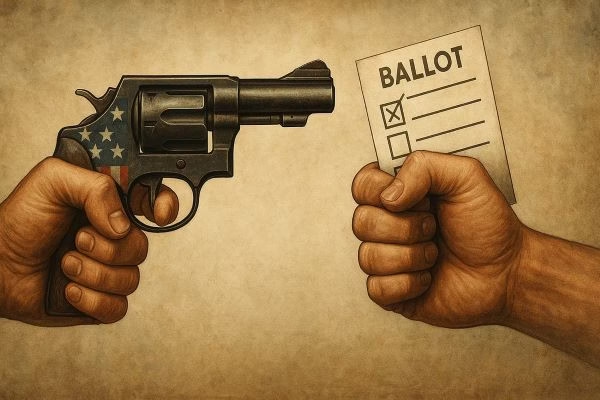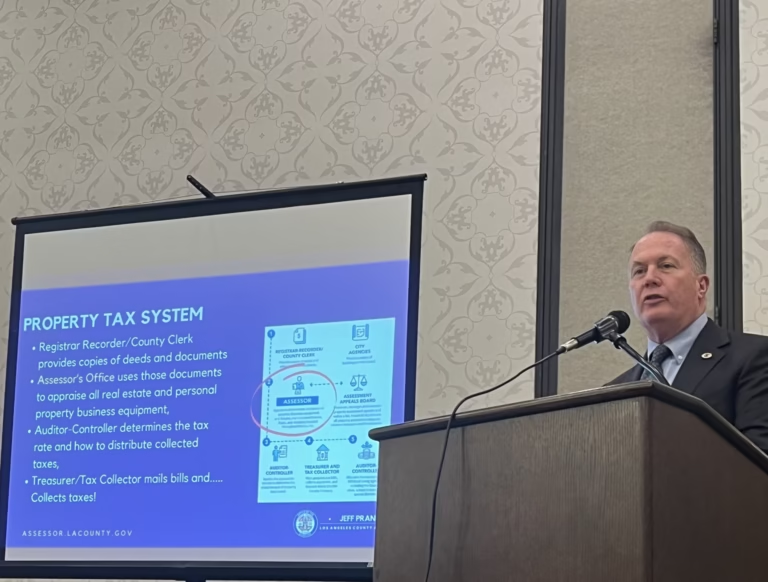Why 51 Texas lawmakers fled the State to stop a power grab, and what it means for us all…
The Republican motto — since Nixon sabotaged LBJ‘s Vietnam peace negotiations and Reagan blew up Carter’s deal to get the Iranian hostages back — has been: “If you can’t win, cheat.”
As Republicans rush to redistrict/gerrymander Texas, if enough Dems leave town there won’t be a quorum so the redistricting can’t happen. Which is why Texas Attorney General Ken Paxton was threatening to lock up Democratic lawmakers to prevent them from leaving the state.
Governor Abbott thought he had a pretty slick plan; have Texas Republicans refuse to consider legislation funding aid to the people stricken by the recent disastrous, climate-change-fueled floods until after the state had been more severely gerrymandered. Because of massive FEMA cuts, those people are pretty desperate.
Calling his bluff yesterday, Democrats fled the state to Illinois, where Governor JB Pritzker offered sanctuary to the 51 Texas legislators in need of it. Texas Democratic Caucus Chair Gene Wu said:
“Governor Abbott has turned the victims of a historic tragedy into political hostages in his submission to Donald Trump. He is using an intentionally racist map to steal the voices of millions of Black and Latino Texans, all to execute a corrupt political deal. Apathy is complicity, and we will not be complicit in the silencing of hard-working communities who have spent decades fighting for the power that Trump wants to steal.”
But that’s just the smallest tip of the iceberg of election rigging that Trumpy Republicans are pushing all across the country. Sadly, because Democrats are not making a big deal nor being theatrical about it, the media is paying almost no attention to the number one way Republicans are rigging the next two elections.
If the Republican Party insists on invoking Abraham Lincoln’s name, they might want to pause and read something the man actually said. “The ballot is stronger than the bullet,” Lincoln famously declared a principle he fought an actual civil war to uphold. But today, the party that claims him as its founder is waging a different kind of war; not against slavery, but against democracy itself.
This time, their biggest weapon isn’t the bullet or even gerrymandering: it’s the purge.
From Georgia to New Jersey, from Congress to the courts, the GOP is in the middle of an all-out assault on the very foundation of American self-governance: the vote. And unlike Trump’s attempts to steal the 2020 election in full public view, this campaign is quieter, more technical, and far even more destructive.
In a breathtaking abuse of power, Trump’s Department of Justice — just eight days after he took the oath of office — began dismantling the legal safeguards meant to protect voters from being purged from the rolls.
Before Trump’s handpicked crony Pam Bondi — the former Florida AG who ignored Jeffrey Epstein for years — was even confirmed, Trump’s DOJ had already dropped a lawsuit challenging Virginia’s last-minute voter purge, throwing massive numbers of people off the voting rolls. Then came Alabama. Then Kentucky.
This wasn’t just some small policy change; it was a purge. And these early moves were just the opening salvo.
By spring, Trump’s captive DOJ wasn’t even pretending anymore. It was openly threatening lawsuits and demanding statewide voter rolls under the flimsy pretext of “citizenship verification,” code for intimidating states into purging voters and making registration harder. At least 16 states have already been contacted, including by federal prosecutors, a deeply disturbing move, considering the DOJ has no legal role in administering elections.
The message couldn’t be clearer: this is about building the infrastructure to interfere with future elections, just as Trump demanded in 2020 before career DOJ officials stopped him.
Now, under his second regime, he’s making sure there’s no one left to say no. The hijacking of the DOJ is not just corrupt: it’s a full-scale assault on democracy, laying the legal groundwork to steal 2026 and 2028 in plain sight.
This is just one aspect of how the modern Republican Party has made voter suppression a central plank of its political strategy, and they’re counting on you not to notice until it’s too late.
To start with Georgia, Secretary of State Brad Raffensperger is often held up by mainstream media as the “reasonable Republican” who stood up to Trump’s plot to overturn the 2020 election. But scratch beneath that surface and you’ll find a man fully on board with the GOP’s long-standing war on voting rights.
This month, Raffensperger announced that his office is canceling the voter registrations of nearly 500,000 Georgians, one of the largest such purges in American history.
Half a million people, gone from the rolls with a bureaucratic keystroke in a state Trump only won by 115,100 in 2024 and lost by a bit over 11,000 in 2020.
That’s not protecting democracy. That’s blowing a hole in the side of the ship and hoping nobody notices the water pouring in.
Raffensperger claims this is about “cleaning” the voter rolls. But Greg Palast, who’s spent decades investigating voter suppression, showed years ago that this kind of mass purge disproportionately targets young people, people of color, and low-income Americans, the exact same groups that tend to vote Democratic.
In fact, in 2018, Palast uncovered that 340,134 voters were wrongly removed from Georgia’s rolls: people who hadn’t moved or died or become ineligible, but were still wiped out under the excuse of “list maintenance.” That purge likely cost Stacey Abrams the governor’s race. In 2020, it happened again and Trump may have lost anyway, but voter suppression certainly made it close.
Then BBC/Rolling Stone/Guardian reporter Greg Palast told us the truth about the 2024 election after going through the roughly 4 million voters who were purged just before that contest with the piece he wrote for this newsletter titled: “TRUMP LOST. Vote Suppression Won”:
“Trump lost. That is, if all legal voters were allowed to vote, if all legal ballots were counted, Trump would have lost the states of Wisconsin, Michigan, Pennsylvania and Georgia. Vice-President Kamala Harris would have won the Presidency with 286 electoral votes.
“And, if not for the mass purge of voters of color, if not for the mass disqualification of provisional and mail-in ballots, if not for the new mass “vigilante” challenges in swing states, Harris would have gained at least another 3,565,000 votes, topping Trump’s official popular vote tally by 1.2 million.”
Harris didn’t lose to Trump. She lost to the vote suppressors and the Democratic Party’s unwillingness to publicly raise a fuss about it or fight back by purging Republican voters in Blue states (a tactic that former Congressional Progressive Caucus Chairman Rep. Mark Pocan endorsed on my program last Friday).
Now, Raffensperger (pronounced “Raff-ens-purger”) wants to go even further. He wrote to Congress this month urging them to repeal the National Voter Registration Act, the 1993 “Motor Voter” law that explicitly says we have a “right to vote” and prevents states from aggressively purging voters without due process.
He wants to make it easier for Republican-controlled states to wipe voters off the rolls without having to follow even the most minimal of those pesky federal rules.
This is not an isolated case. This is part of a larger GOP strategy to quietly dismantle the machinery of voting rights under the guise of “election integrity.”
In Congress, Republicans recently held a hearing stacked with anti-voting extremists who pushed for weakening federal voting laws and expanding purges. And in New Jersey — not even a swing state — the RNC just filed a lawsuit demanding access to the state’s voter rolls and voting machine records, another front in their broader war to “find” nonexistent voter fraud and justify new crackdowns.
Why New Jersey? Because there’s a governor’s race this fall, and Republicans are desperate for a win they can spin into momentum.
This isn’t just about fraud; it’s also about fear. They know their policies are unpopular. They know the American majority doesn’t want forced birth, dirtier air, gutted Medicaid, book bans, billionaire tax breaks, the military in our streets, and an adjudicated fraudster and bribe-accepting rapist in the White House. So instead of changing their platform, they’re changing the rules of the game.
We’ve seen this playbook before. After the Supreme Court gutted the Voting Rights Act in Shelby County v. Holder, Republican-controlled states wasted no time enacting new voter ID laws, slashing polling places and drop boxes in Black neighborhoods, ending Sunday voting, and purging rolls en masse.
These weren’t reforms or even list-cleaning efforts. These were weapons, and they worked and continue to work.
The strategy is simple: create enough barriers to voting that millions of eligible Americans either don’t know they’ve been purged, or give up trying to fight their way through the red tape.
Even the Department of Justice, now fully politicized, is getting in on the act. They’ve reportedly sent letters to states demanding voter information, supposedly in search of “illegal voting.”
This is the same phony excuse used by Trump’s disbanded voter fraud commission in 2017 — which spent millions and didn’t find any voter fraud anywhere in America — and it’s just as baseless now as it was then.
But that doesn’t matter. The point is to discourage, intimidate, and overwhelm; to make voting feel difficult, risky, or futile.
Marc Elias, one of the few high-powered lawyers still fighting for democracy in the courts, put it plainly:
“Make no mistake: these efforts to make it easier to remove voters from the rolls are actively weakening our democracy.”
He’s right. We are watching, in real time, the intentional hollowing-out of our most sacred civic act that’s at the foundation of democracy: voting.
It’s not just that the GOP is unwilling to stand up for voting rights. It’s that they’re actively engineering our democracy’s collapse. Trump’s Justice Department just demanded voting information from Alaska, Arizona, California, Florida, Illinois, Maine, Maryland, Michigan, Minnesota, Nevada, Oklahoma, New Hampshire, New York, Utah, and Wisconsin.
They’re attacking our democracy itself; not openly, not with slogans, but with data files, database matching tricks, and lawsuits designed to strip you of your rights and your vote before you even realize what’s happened.
Abraham Lincoln said the ballot was stronger than the bullet. Ronald Reagan — a man I rarely quote favorably — once called voting “the crown jewel of American liberties.” But today’s Republican Party has betrayed both. They have traded Lincoln’s legacy for Trump’s lies and turned Reagan’s jewel into a cheap trinket sold off for power.
Thus, the New Civil War the GOP has declared on America is in a way reminiscent of the Old South’s Confederacy, although this time it isn’t being fought with bullets; it’s with ballots.
The 2025 elections and the 2026 midterms and beyond will be fought not just on the campaign trail, but at your county elections office, at your state legislature, and in your mailbox.
And if we don’t demand that our Democratic state officials gerrymander, purge, publicize, litigate, and employ every other legal method to counter this GOP assault on democracy, we may wake up one day soon and find that, like in Russia and Hungary, the ballot has become meaningless.
Our ancestors bled for the right to vote and have it count. Our enemies fear it. The only question left is will we — and elected Democrats — demand change loudly enough to provoke action before it’s too late?
































